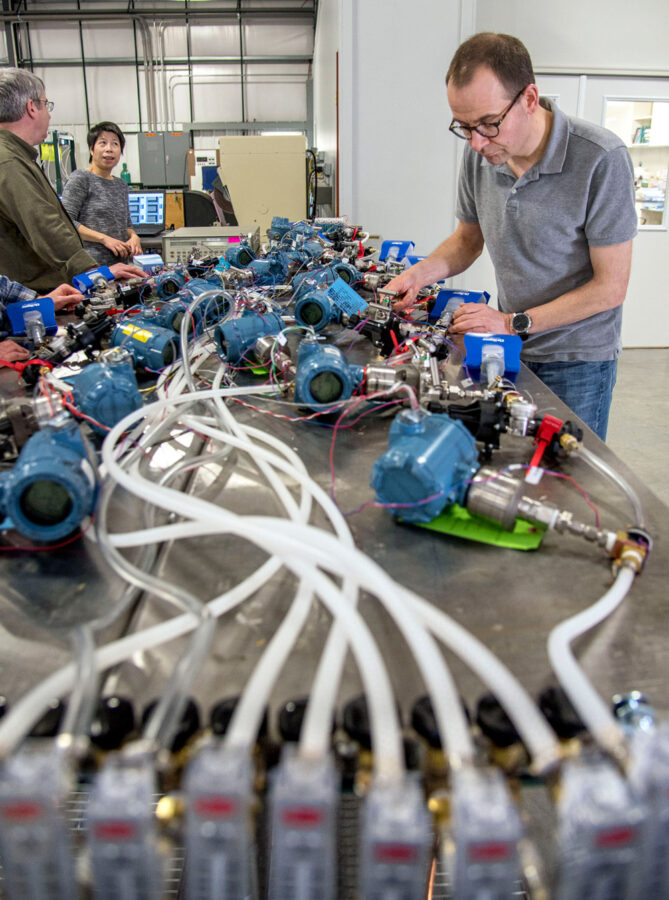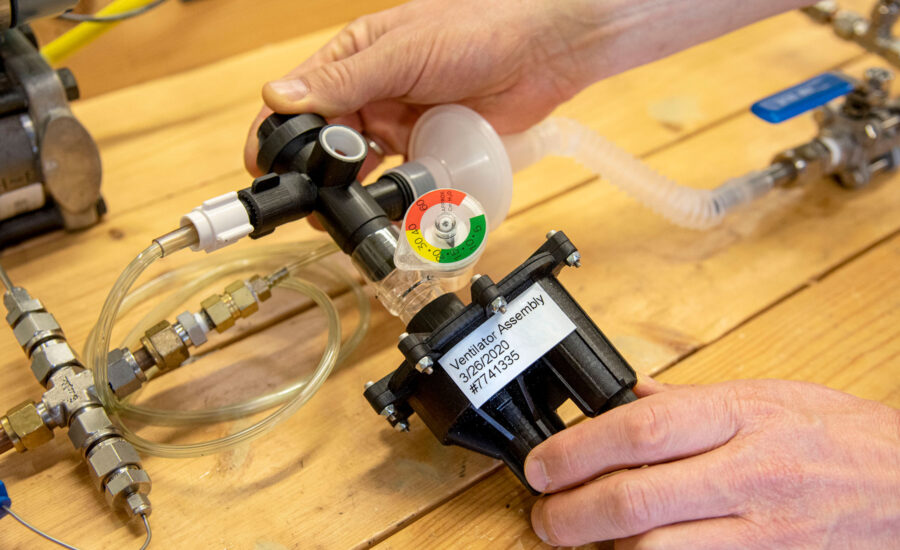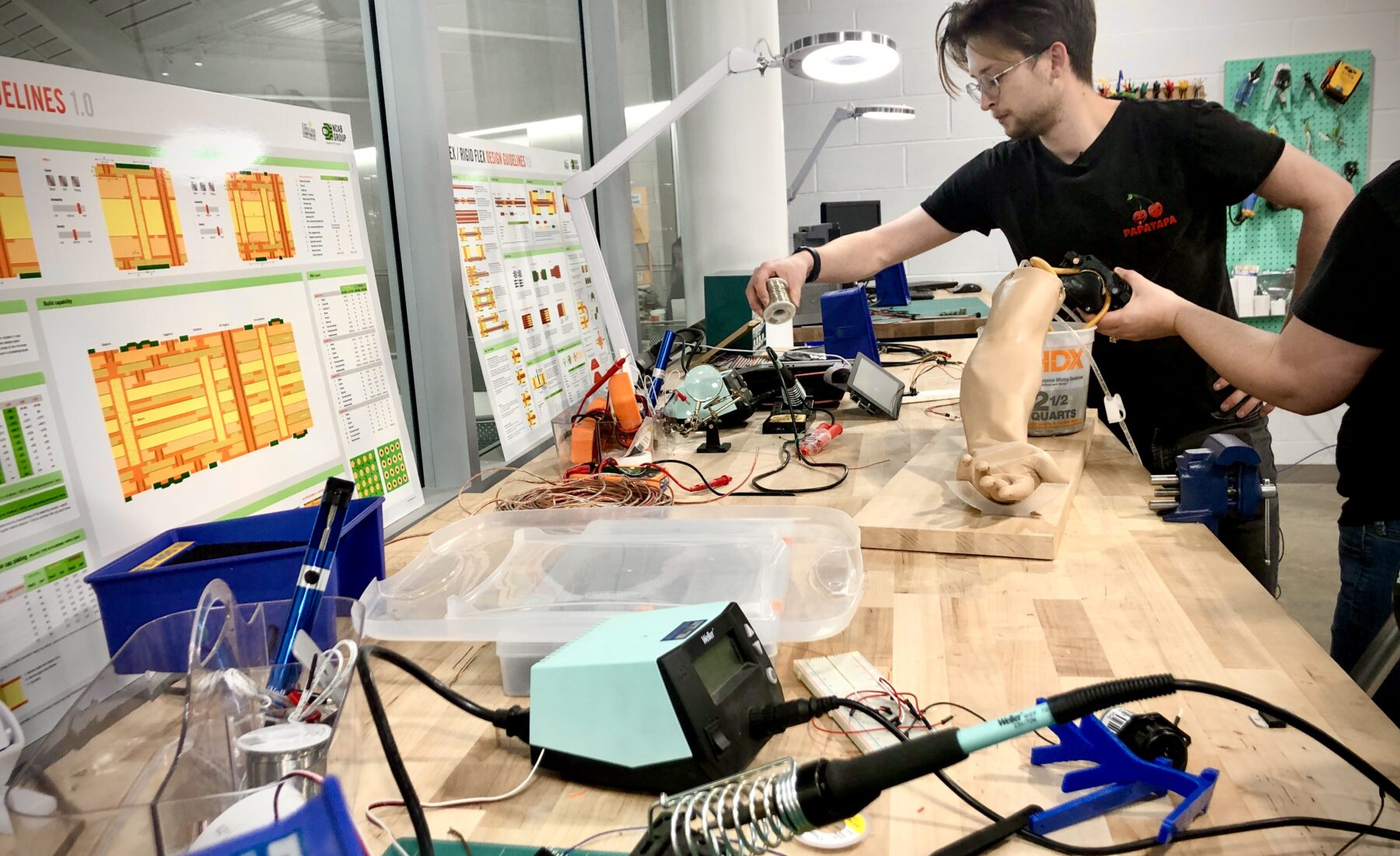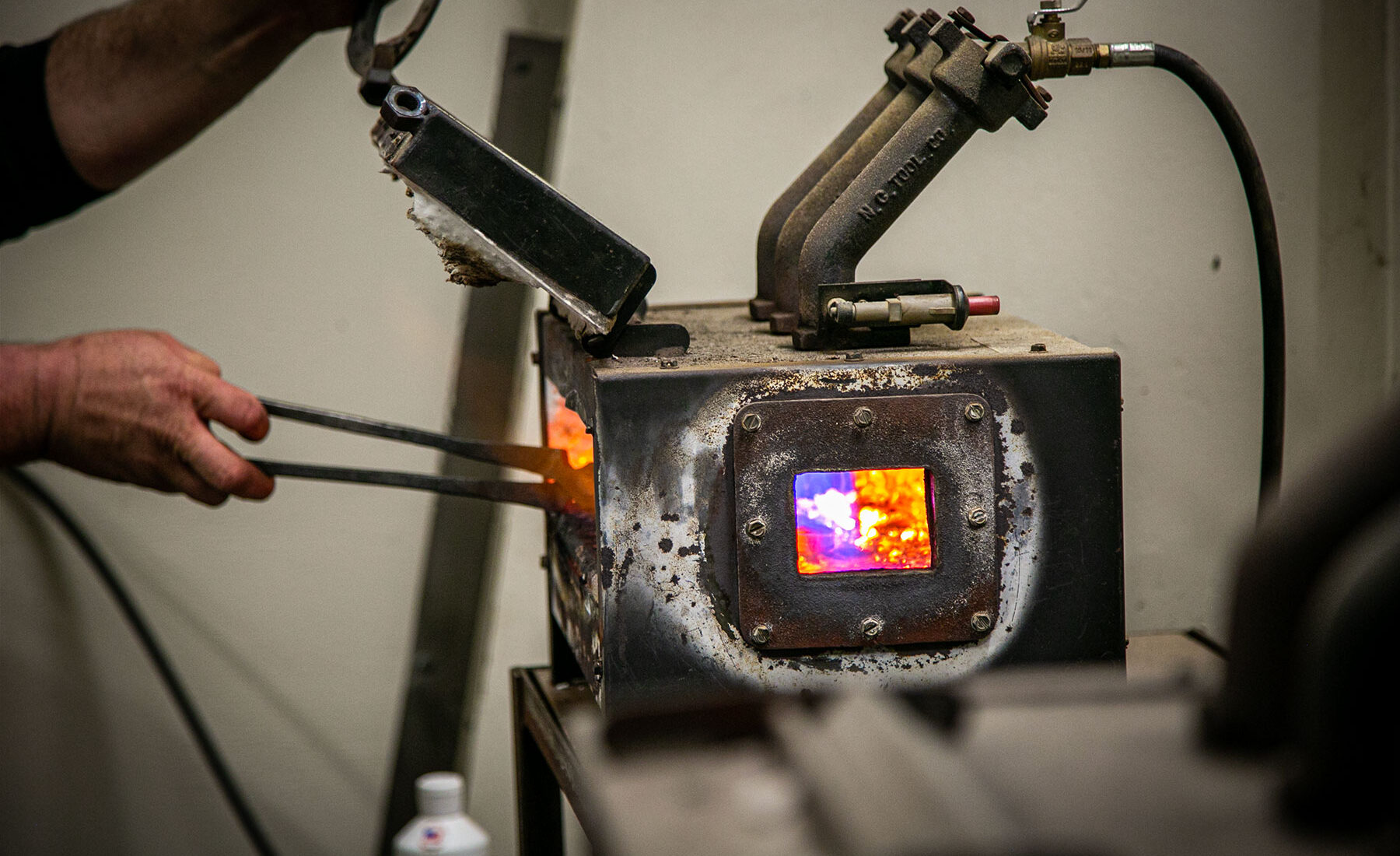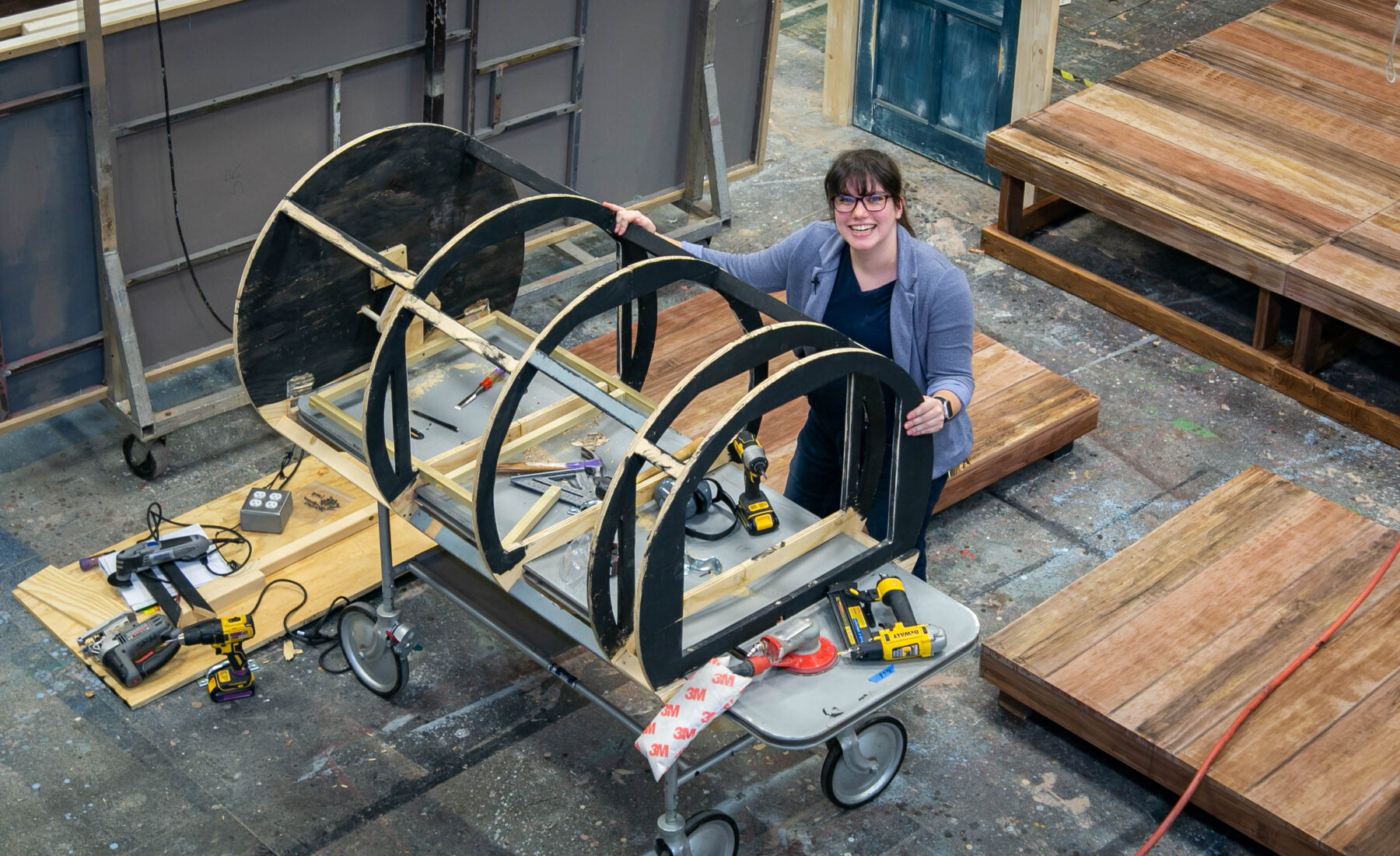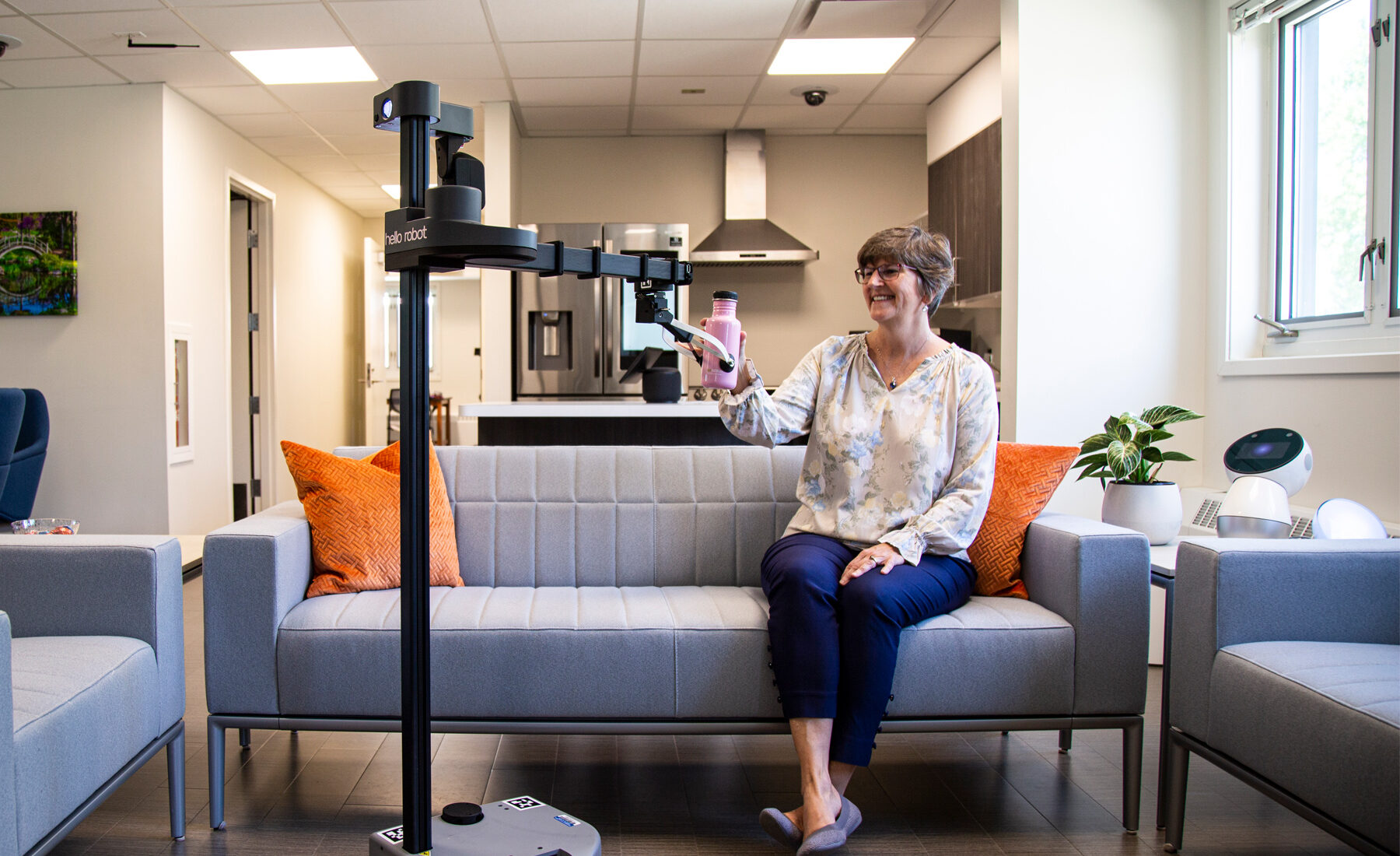There were about 25 people on the Zoom meeting—a team from across the University of Illinois Urbana-Champaign and Carle Health, which runs the biggest hospital in the region. They were calling in from four time zones, from a baby’s room with its zoo animal decorations on the wall, from a kitchen that hadn’t been tidied. Kids were talking in the background, wandering through a moment in their lives that was just starting to get strange.
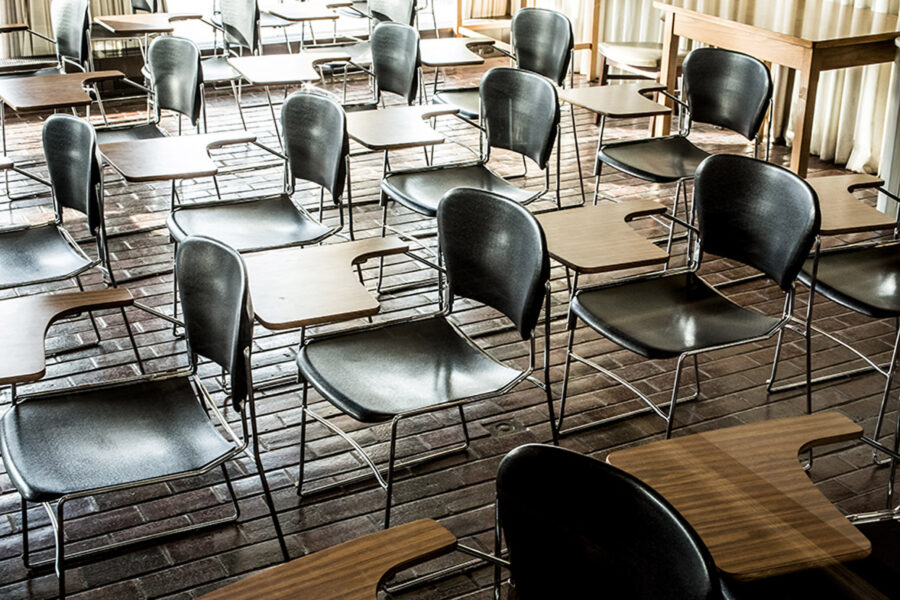
It was two in the afternoon on Sunday, March 15. It was supposed to be Spring Break; there was an outbreak instead.
The United States was tracking about 3,500 known COVID-19 cases. (As of September, 2020, there have been more than 6 million cases in the U.S.) Much of China was in lockdown, and Northern Italy was overwhelmed. The suffering was tremendous and widespread. The worry was too.
The team at Carle Health had approached people at The Grainger College of Engineering the previous Friday, looking for help with a very challenging problem. One of the intensive care doctors from Carle, Dr. Mark Johnson, gave the group of engineers, doctors, medical professionals, designers, and manufacturing experts from industry the bullet points on the situation: COVID-19 infection rates are very high, and about 10 percent of those infected are likely to need intensive care and a ventilator to help them breathe.
There was a very real threat that demand would outstrip capacity, both locally and in hotspots around the world. Dr. Johnson got choked up as he told the group, “If you need an ICU bed and don’t get it, there’s a near 100 percent mortality rate.”
‘Ambitious and audacious’
In order to treat patients, doctors need three things: Staff, space, and stuff. Stuff was very much on Johnson’s mind that day. In particular, he was worried about the ventilators.
That’s why we were all starting to social distance and attempting to flatten the curve back in March. But many projections were still dismal. Traditional ventilators are complex, and the supply chains that supply their parts and technology are too. Companies were announcing plans to ramp up production, but they were telling the world that those ventilators were months upon months away.
Space and staff might be scrounged, but there simply weren’t going to be enough ventilators if the disease was rampant.
There wasn’t a lot of room for optimism in the conversation, but the team found it anyway. Before they had even wrapped up their first meeting, they decided they would design and test a “no-frills” emergency ventilator that could operate using an oxygen tank or the standard oxygen available from a wall outlet in most operating rooms. It would be inexpensive to manufacture, simple to build, and done in three weeks.
The Illinois RapidVent project, as the emergency ventilator would be known, was underway.

“We knew that global disruptions were going to come in waves and waves over the next year and that there was no promise the supply of traditional, complex ventilators would ever catch up,” William King, a professor of mechanical science and engineering at The Grainger College of Engineering who led the project, said later. “It was an ambitious and audacious thing to try. But it was absolutely necessary. It was an open question, in those first days of the project, if we were up to the challenge.”
‘No longer fantastical’
Plenty of people knew a shortage of ventilators was a threat. During former President George W. Bush’s administration, the federal government put together a comprehensive “playbook” for pandemic response that included a plan for a national stockpile of traditional and emergency ventilators and other supplies necessary for a robust, coordinated response.
Tom Bossert, the Deputy Homeland Security Advisor to Bush, told ABC News in April 2020 that the president responded to a post-9/11 wake-up call about the threats the nation faced.
“There was a realization that it’s no longer fantastical to raise scenarios about planes falling from the sky or anthrax arriving in the mail. It was not novel. It was the world we were living in. [Bush] was completely taken by the reality that a pandemic was going to happen,” Bossert said.
In 2008, the Bush administration set up a program encouraging contractors to design and build simple, portable ventilators for a federal stockpile of medical equipment. The ventilators were to be more complicated and expensive than the Illinois RapidVent would ultimately be, but much more portable and easier-to-use than traditional ventilators. After a variety of delays, corporate mergers, and failures, the government contract was canceled in 2014 without a single ventilator being delivered for the stockpile, according to the New York Times. A new government contract for a different ventilator design was established with another company. Delivery on those ventilators was expected in mid-2020.
Taking six years to arrive at a failure, the nation was told to wait six years for the next solution.
When the COVID-19 pandemic began to take hold in the United States, the federal ventilator stockpile had fewer than 25 percent of the ventilators that public health officials estimated it would need. None of them were of the simpler design, and an Associated Press investigation found that many required repair before they could be distributed to the hospitals that needed them.
“The government’s stockpile is a great asset to have nationally, but if it’s taxed, it won’t have enough supplies. Many people have called for greater stockpiles, but unfortunately, we are where we are,” Dr. Anand Parekh, the Bipartisan Policy Center’s chief medical advisor, told the Los Angeles Times in March 2020.
The Illinois RapidVent team stepped into that environment, despite the daunting landscape and the false-starts that preceded them. They relied on the medical expertise of Carle Health, the world-class engineering team at The Grainger College of Engineering, and local companies who were ready to move quickly, including Creative Thermal Solutions and TEKMILL, both of which are based in Champaign-Urbana.
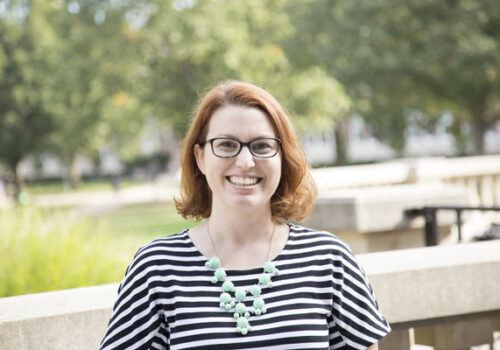
Many members of the team had collaborated previously through the Carle Illinois College of Medicine, which is the world’s first medical school built from the ground up at the intersection of engineering and medicine.
“Having doctors reach out to engineering faculty is really proof of the incredible environment we’ve created here at Illinois. It was the foundation of why we formed the Carle Illinois College of Medicine. The doctors know that they need engineering and technology to support them in healthcare. The engineers know that they need medical professionals to guide their work in the field. To see that happen in real time was amazing,” said Jenny Amos, a teaching associate professor of bioengineering at The Grainger College of Engineering and quality officer for the Carle Illinois College of Medicine.
“It’s easy to feel helpless during this pandemic. Like you can’t have an impact or do anything. But bringing your skillsets to be a part of the solution is so rewarding,” said Amos, who was instrumental in several parts of the Illinois RapidVent project including planning and testing.
Amos has been teaching design courses in bioengineering for more than a decade and was a part of the team that helped create the Carle Illinois College of Medicine. She’s been steeped in this sort of work throughout her career. But others were entirely new to medical devices and healthcare initiatives.
‘This thing is going to happen’
Sameh Tawfick, for example, wasn’t expecting a text from William King on that first Sunday night. Tawfick is a professor of mechanical science and engineering and an affiliate of the campus’ Beckman Institute for Advanced Science and Technology. He works at the intersection of materials science and the design of manufacturing systems. He and King co-advise students. Their offices—before the state’s stay-at-home policies, anyway—are right next to each other. He was still surprised when King brought him in on the project.
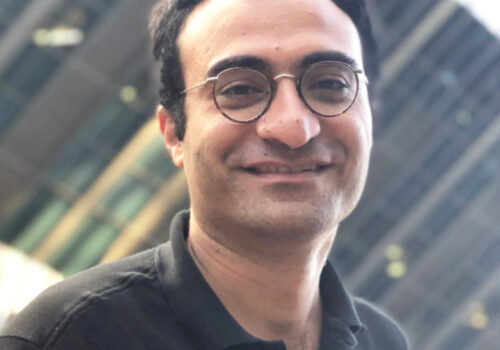
So was his wife. “She asks me, ‘How are you going to work on ventilators? You don’t know anything about ventilators.’ And I had my doubts, too. ‘Do we really want to get into this? It’s a big responsibility. Can we pull it off?’” Tawfick said.
“Within the first ten minutes of my first meeting, I thought ‘This is going to happen.’ We assembled a group that knows what it’s doing. My doubts were wiped out. I already knew that Grainger engineers are always moving on the fast-track. But with this combined group, we were going to be on the super fast-track.”
Carle Health’s Dr. Karen White was pleasantly surprised to be on the super fast-track too, even as the Illinois RapidVent team grew to almost 50 people.
Days after jumping into the project, White found herself in a veterinary surgical theater—a no-nonsense space on the south end of campus that has seen thousands of pigs, sheep, and goats over the decades. Those animals had been part of tissue engineering studies, craniofacial surgeries, and liposuction procedures to harvest animals’ stem cells. But on that day in late March, the surgery room was hosting the first ventilator studies in its history, which were also the first animal tests for the Illinois RapidVent.
Professor Matthew Wheeler of the U of I’s Department of Animal Sciences and his colleagues had a pig hooked up to the emergency ventilator. Weighing in at 240 pounds and standing in for a human, Pig 3133 got its name from its date of birth (March, the 3rd month), its breed (a Yorkshire, which the researchers encode with a “1”), and its birth order (the 3rd litter born that month and the 3rd pig in its litter).
As Pig 3133 took its first assisted breaths, White was multitasking. She was on another RapidVent call, discussing the strategy for sharing the ventilator designs with the public. Mid-meeting, wearing her gown, mask, and scrub cap, she swung her phone around so another group of colleagues could take part from their home offices.
“It was an incredible moment,” said White, an intensivist at Carle who is their medical director of respiratory care.
Pig 3133 spent three hours on the respirator. It fared well, as did all the other pigs tested over the next couple of days. Everyone was “up and around and eating breakfast the next morning,” Wheeler reported later.
White was pleased with the pigs and their response. The tests gave her confidence that RapidVent would be a viable solution in dire straits. She was also pleased with the people who surrounded her.
“I have not been involved in any project where people have come together so quickly. And I have never been involved in project where everyone is so unafraid to ask ‘Am I doing this right? Is this what you need?’ The ability to say ‘That’s not exactly how I’d use it.’ And have them say, ‘How can we make it happen?’ It has been amazing to watch this Herculean effort.”
‘A special place—almost unique’
While the animal testing team looked at real, live pigs’ lungs and their health, another small team was meeting in-person to look at test lungs—devices that simulate human breathing. Effectively bellows that allow air to be pushed into them and then decompress, RapidVent prototypes logged more than two million simulated breathing cycles before the project was complete. They ran for days at a time, allowing the team to identify problems and refine the design.
Two million breathing cycles don’t happen overnight. In fact, it took about two weeks to complete those cycles. That meant the testing team—led by Stefan Elbel, a research assistant professor and who also works at Creative Thermal Solutions, and Greg Elliott, a professor of aerospace engineering—practically lived in the testing lab at CTS’s facilities in Urbana. (They were among a handful of people who met in person. But the vast majority of the team practiced social distancing and had grown used to videoconferences—hours of them, day in and day out.)
“We had to give Greg a key to the place, basically” Elbel said. “You use your engineering intuition in times like these. You surround yourself with people like Greg and the staff at CTS. And new directions of thought arise together. You keep coordinating. You keep those thoughts organized and moving forward. And then you question everything and test everything again and again.”
It’s the sort of work that simply can’t be done everywhere, according to Rashid Bashir, dean of the Grainger College of Engineering, who, as a bioengineer, was also part of the Illinois RapidVent project.
“Champaign-Urbana is a special place—almost unique,” he said. “We had medical experts and engineering experts. But we also had these industrial and manufacturing experts ready to move immediately. Creative Thermal Solutions and TEKMILL had resources and people that a university isn’t going to have.”
“They were there beside us, in the thick of it with us from the very beginning. TEKMILL interfacing with other manufacturing companies, bridging the gap between prototyping and manufacturing. CTS heading up testing.”
‘A great little device’
On March 27—only 12 days after the initial meeting on Zoom—the Illinois RapidVent team released their emergency ventilator design, including CAD drawings and detailed descriptions of the concept, online via a free license. “We knew it filled a need,” William King said.
Dr. Mark Johnson from Carle Health, who was integral to the team throughout the design, agreed “It’s inexpensive. It can be developed and manufactured very quickly. If you drop it, it doesn’t break. It can run off the wall oxygen in any hospital room in the United States, or it can run off compressed oxygen tank in a field hospital,” he said. “It’s a great little device when you’re in an emergency and have run out of other options.”
More than 60 companies and research institutions around the world downloaded the designs for that great little device. Doctors in Egypt wanted to explore the promise of the device for low-resource areas where traditional ventilators are unavailable. Federal agencies wanted to understand the possibility of using the emergency ventilators in mass casualty events unrelated to COVID-19. Manufacturers large and small had questions about the design.
Then things changed—abruptly. After thousands of person-hours working as hard as they could, running as fast as they could, the design was complete. Subteams worked on a few enhancements, minor revisions were made, technology transition experts got a workout responding to all the licensing requests. The passion didn’t vanish, but team members could, for the most part, go back to the rest of their lives—prepping for that summer class, trying to figure out how to do their other research during a pandemic, eating dinner somewhere other than their desk.
“We wanted to get this technology out into the world to help as many people as possible, and the best way to do that was to move things into other people’s hands. It was a challenge to finalize all the pieces of the project while winding down this massive operation,” King said.
By May, it was obvious that hospitals wouldn’t be overwhelmed in the first wave of the COVID-19 pandemic—social distancing and policy decisions had flattened the curve, and states had begun to relax stay-at-home orders. It was also obvious that hospitals needed to be prepared for future waves of infections and for other emergencies that would tax respiratory care locally and globally.
“In healthcare we must do everything we can to meet our patients needs now and in the future. That’s never been more true than it is right now,” said Dr. Charles Dennis, Carle Health’s Chief Medical Officer.
But hospitals and universities don’t mass produce medical equipment. Manufacturing companies do. That’s where consumer electronics giant Belkin stepped in. Belkin began plans to produce the FlexVent Gas-Operated Ventilator, based on the Illinois RapidVent design in May (pending EUA approval). More than 10,000 of the FlexVent are set to be built and distributed to hospitals around the country.

Having merged with Foxconn Interconnect Technologies (FIT) in 2018, Belkin had been working with Grainger engineers on other, unrelated projects. A $50 million investment by FIT last year launched the Center for Networked Intelligent Components and Environments housed at the U of I’s Coordinated Science Lab, and FIT’s CEO Sidney Lu is an alumnus of the Department of Mechanical Science and Engineering. The longstanding relationship meant that Belkin knew they would have a great partner in the U of I and a great piece of technology in its emergency ventilator design.
“COVID-19 is one of the most urgent humanitarian crises we have experienced in our lifetimes and the number one responsibility for each of us in this moment is the care and compassion for others in need. We knew we had the global manufacturing assets and know-how. But we also knew we needed experts like those at the U of I to live out that responsibility,” said Chet Pipkin, CEO and founder of Belkin. “We had to take action where we could. With a global pandemic underway, we quickly realigned our assets to serve the healthcare community.”
That’s exactly what the entire Illinois RapidVent team did. Took action where they could. Contributed their particular skills—as doctors, nurses, respiratory therapists, manufacturing experts, designers, project managers, web developers, and engineers, you name it. In the face of a crisis, they showed compassion and ingenuity, a sense of responsibility, and the confidence that they could do something hard and helpful. They recognized an important problem and brought their skills to bear on it. And a distinctive solution, now in production for patients everywhere, was born.
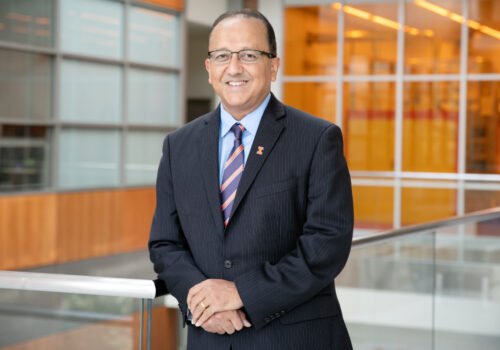
“It’s the Illinois way,” said Dean Rashid Bashir. “Not just a drive to solve problems but a passion to have real-world impact. Not just world-class technical skills but a willingness to join your colleagues, truly listen to them, and put in the extra effort to do something great. We do great thing together—egos aside, guards down, and confident that the person next to you is doing spectacular work, too.”
This story was published .